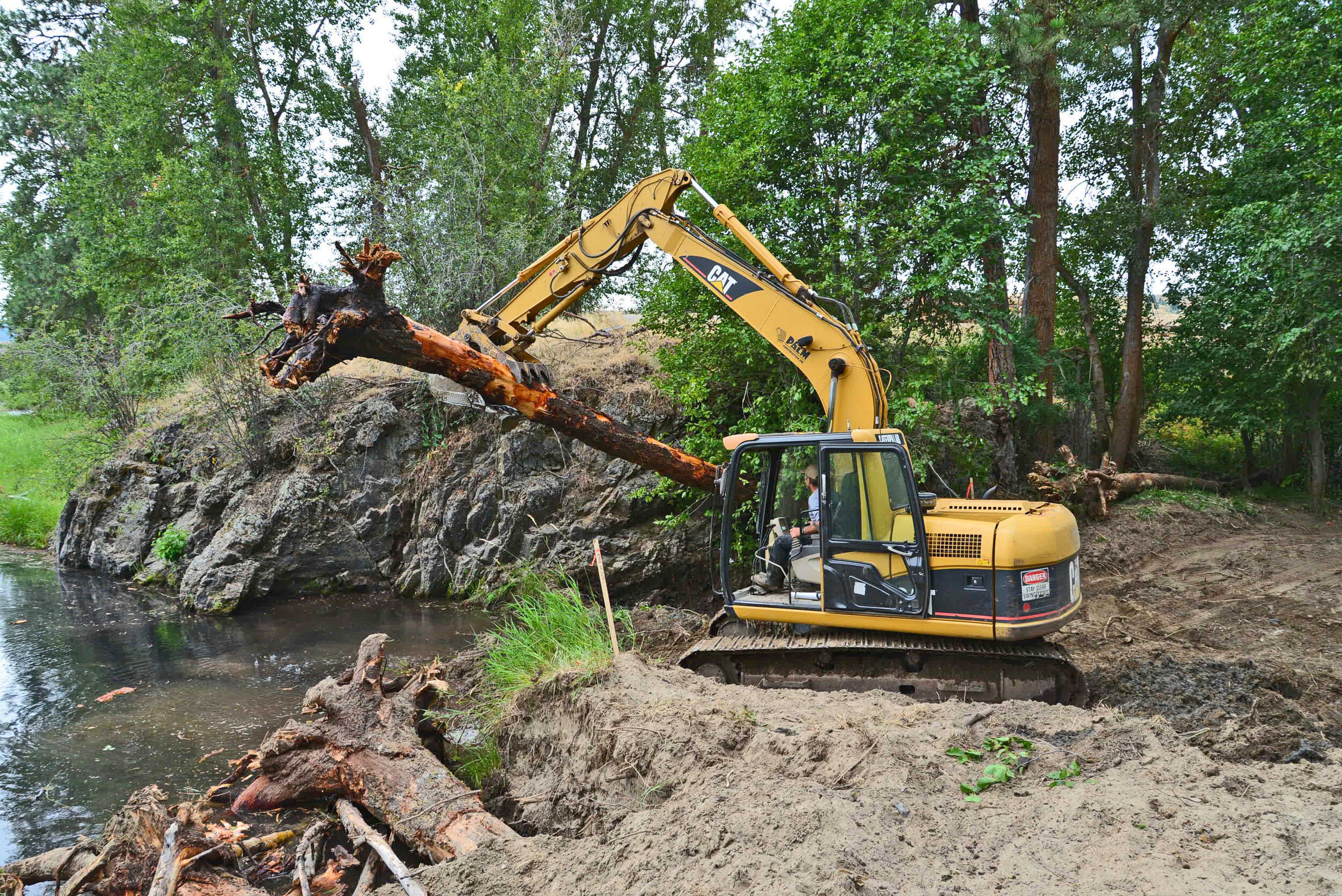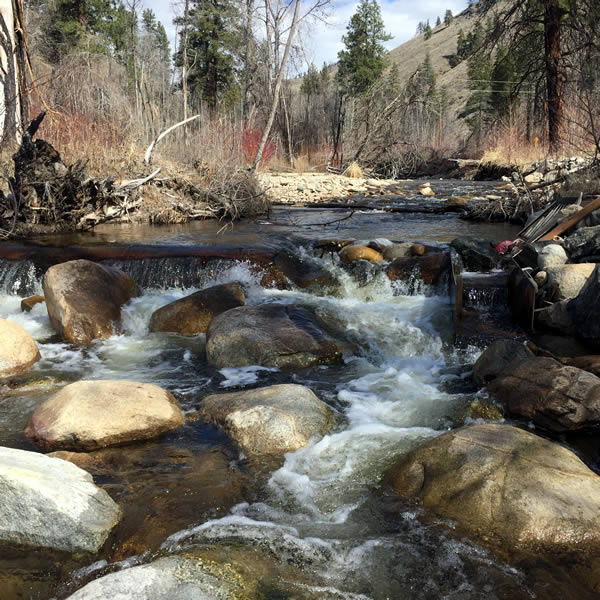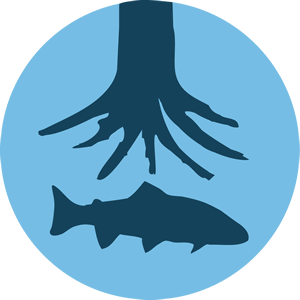Salmon Habitat Restoration
In order to survive, salmon need cold, clear water and access to good habitat. Salmon use a variety of habitats during their lifetime. Important habitats include small rocks and boulders, deep pools, tangles of tree roots along riverbanks, downed trees, and log jams. Salmon use these habitats in main channels, side channels, as well as wetlands and ponds. In order for fish to access these habitats, they need to be connected at all stream flows.
Developing projects to maximize fish benefit
Habitat restoration projects are designed to improve habitat factors that limit fish growth and survival. In the Methow, these “limiting factors” include low instream flow, reduced stream habitat complexity, loss of floodplain connectivity, degraded water quality, and a lack of riparian vegetation. Many streams in the Methow have been studied to determine the types of limiting factors present. Once the limitations have been identified, restoration projects are developed to address these limitations and improve conditions for fish
Designing and implementing projects are a coordinated effort between salmon recovery agencies and the community. It is important that projects meet their habitat objective while accounting for recreational river use, agriculture and landowner needs, as well as overall river aesthetics.
Trees with root wads are secured along the banks of a side channel to provide habitat for juvenile salmonids.
Projects may address one or many of the following components:
Riparian planting and wetland vegetation to increase habitat and shade water
Installing woody structures to increase channel complexity
Reconnect floodplains and side channels to increase juvenile rearing habitat
Removal of a barrier that prevents or hinders fish passage
Learn more about our Salmon Habitat Projects
Get Involved
Many of our projects are possible because of collaboration with private landowners. Landowners who are interested in habitat protection or restoration on their properties can contact us for more information. More details on restoration projects can be found in our Restoration Guide.
Restoration project vary in scale and duration, and we make en effort to work with local contractors. Contractors who are interested in bidding on future projects can contact us to be placed on our contractor list.









